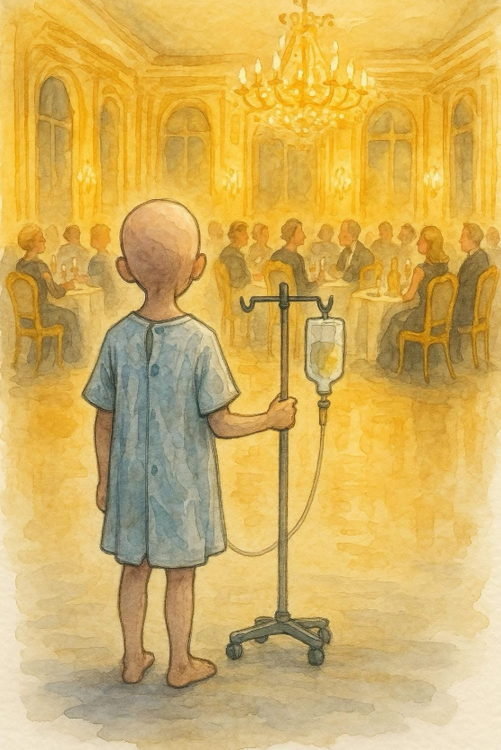All Activity
- Past hour
-
Anyone have an idea of what I should expect in Kentucky? Do I bother trying to find a tailgate?
-

Texas Football 2025 Fall Camp - Kicking the Sonofabitch In
futureman replied to closetojumping's topic in Football
@Macklemore -
What's a Cat Peer? I duckduckgo'ed and got a bunch of articles on cat urination?
-

Texas Football 2025 Fall Camp - Kicking the Sonofabitch In
Rimbo replied to closetojumping's topic in Football
that's SO fucking cool -
Texas Football 2025 Fall Camp - Kicking the Sonofabitch In
Hermanator replied to closetojumping's topic in Football
That's what it was. That and he was the goofy bastard in that Twisters movie. Never knew his name -
Since this alotta SEC talk... Dusty has Lsu beating Bama in SEC championship. Jawja finishing 3rd and Texas 4th. Dusty Dvoracek on Why He Likes LSU to Win the SEC + the Arch Manning, Penn State & Clemson Hype
-
Texas Recruiting Notes 2026: Boulevard of Broken Bagmen
Bamboozled73 replied to texifornia's topic in 🤫$9.95🤫
Breckyn Hager? I’ll show myself out. -
The latest from John Alter, who happens to be a Jew. A REALLY BIG JEW. (We share a mutual friend). Hunger in Gaza — the Facts What is actually happening with food and famine on the ground? I asked a World Food Programme official who has some answers. Jonathan Alter Aug 6 READ IN APP Like millions of others, I have strong feelings about Gaza. I think the U.S. should immediately suspend aid to Benjamin Netanyahu’s extremist criminal government until it agrees to a ceasefire, and that Americans who back him are complicit in turning the Jewish State into a pariah state that will have a harder time surviving in the long run. At the same time, the international community should move beyond lame “To be sure, October 7 was bad” qualifiers to a clear recognition that Hamas is arguably the only regime in modern history that actually wants its women and children killed for propaganda purposes and won’t allow them to take cover. Hamas militants hide in tunnels (where civilians aren’t allowed) and grab the food they need, at gunpoint if necessary. Note that the photos released last month of emaciated Israeli hostages were not accompanied by similar images of their captors, who are no doubt eating OK. Now that I have that off my chest, I want to offer a dispassionate, factual assessment of what is actually happening with food relief efforts on the ground, where reporters are not allowed. President Trump wants credit and a thank you (from a starving six-year-old with a satellite uplink?) for pledging (but not yet spending) $60 million in food aid. But the problem in Gaza is not money or even food supplies; it’s the war, which severely hampers the ability of relief organizations to access distribution points and prevent desperate civilians and armed gangs from pushing through security and grabbing the food off trucks. So far, about 1,000 people have been killed near distribution points, though it’s unclear how many of them have been trampled to death, shot by trigger-happy Israeli soldiers (investigations of these incidents are underway), or killed by local thugs. It’s also unclear how many Gazans have died from hunger. While North Darfur in Western Sudan is the only place in the world where “famine” is currently confirmed (i.e. at least 30 percent of children under age five with severe malnutrition and two deaths per 10,000 people a day), the situation in Gaza is dire, with more than half a million people enduring famine-like conditions and uncounted thousands dead from malnutrition-related illnesses. There are few functioning bakeries, and Palestinians have been forced to make bread with old pieces of bread, old pasta, and other makeshift supplies. The World Food Programme (WFP), which won a Nobel Peace Prize in 2020 for its efforts to combat hunger, promote peace and prevent the use of hunger as a weapon of war, has tried to move flour and the fuel needed for cooking into the Gaza Strip. But with so many Palestinians crammed into vast seaside encampments or trying to return to dangerous, bombed-out buildings (often their former homes), most of them sealed off by the IDF, it’s almost impossible to provide relief with bullets still flying. A ceasefire would immediately relieve hunger, as the brief ceasefire did in January and February. Jonathan Dumont, who for 22 years, has headed television communications for the WFP, told me: “With no shooting, people can go out and look for food.” Dumont, an Emmy-winning former broadcast journalist for CNN and the BBC, has been in and out of Gaza throughout the crisis. He has seen worse starvation elsewhere, but not a situation of civilians trapped in a tiny area (the Gaza Strip is roughly the size of metropolitan Detroit) with no place to flee. “I’ve never seen anything like this,” he said. We had dinner in Rome in June and continued the conversation by email this month. Excerpts: Upgrade to paid JONATHAN ALTER: How have the recent images of starving Palestinians flashed across the world changed things on the ground for the WFP and for Palestinian civilians? JONATHAN DUMONT: The July 29 IPC Alert (the combined assessment of 21 famine relief agencies) warns that the worst-case scenario of famine is currently playing out in Gaza. While you hear arguments about the data, people are starving. Having been there, I can assure you the desperation and hunger are palpable. You can hear it in people’s voices, you can see it in their eyes. Despite the inability of non-Gazan and humanitarian journalists to access Gaza, images of desperate Palestinians trying to access food to feed their families and malnourished children withering away in their mother’s arms are apparently having an effect on decision-makers and leaders around the world. This is why I work for WFP — to try to give a voice to the forgotten or hidden hungry in places like Gaza, Sudan, and Haiti who otherwise would starve in silence. “…the worst-case scenario of famine is currently playing out in Gaza. While you hear arguments about the data, people are starving. Having been there, I can assure you the desperation and hunger are palpable. You can hear it in people’s voices, you can see it in their eyes.” JONATHAN ALTER Is the situation still worsening by the day, or is there some stabilization? JONATHAN DUMONT: We know how to fix the situation. It’s what we do. We need to flood Gaza with large-scale food aid - immediately and without obstruction. We need to keep it flowing each and every day to prevent mass starvation. During the ceasefire in January, when we were able to bring sufficient quantities of food, the problem of looting and seizure of our food disappeared. We need to get sufficient quantities of food into Gaza to reduce the level of desperation. JONATHAN ALTER: The WFP estimated that 100,000 Gazans are suffering from “severe acute malnutrition.” What does that mean? JONATHAN DUMONT: Hunger weakens the immune system. Diseases that ordinarily can be fought off by a healthy, nourished person become deadly when someone is malnourished. This affects the most vulnerable the worst. Food consumption – the first core famine indicator — has plummeted in Gaza since the last IPC Update in May 2025. Data shows that more than one in three people (39 percent) are now going days at a time without eating. More than 500,000 people – nearly a quarter of Gaza’s population – are enduring famine-like conditions, while the remaining population is facing emergency levels of hunger. JONATHAN ALTER: Any idea how many women and children are starving? Hunger is always worse for them, right? JONATHAN DUMONT: The latest IPC indicates that as of July 2025, more than 320,000 children, the entire population under five in the Gaza Strip, are at risk of acute malnutrition, with thousands suffering from severe acute malnutrition, the deadliest form of undernutrition. Essential nutrition services have collapsed, with infants lacking access to safe water, breast milk substitutes, and therapeutic feeding. In June, 6,500 children were admitted for treatment for malnutrition, the highest number since the conflict began. July tracked even higher, with 5,000 children admitted in just the first two weeks. With fewer than 15 percent of essential nutrition treatment services currently functional, the risk of malnutrition-related deaths among infants and young children is higher than ever before. JONATHAN ALTER: There is some food in the stores, but the prices are astronomical, right? Can you give us some idea of what food costs there? JONATHAN DUMONT: This report on prices is accurate. Food systems have collapsed, and humanitarian food assistance, the main lifeline for most households, is dwindling. People have exhausted all coping mechanisms. Community kitchens are overwhelmed, and reaching food distribution points often requires dangerous, high-risk journeys, especially for the most vulnerable. Most households now rely on minimal staples — mainly pulses and bread. But bread consumption has dropped to just four days a week, far below pre-conflict levels. This extreme lack of nutrients is driving widespread starvation, disease, and excess mortality. In the market, flour for bread has been up (hundreds of times) more expensive than before the war, and cooking fuel is nowhere to be found. In July, over 95 percent of the cargo delivered was taken by large crowds of civilians desperate for food. Although the cargo never reached the intended destinations, through our regular distribution system, flour prices decreased in some areas. “Food systems have collapsed, and humanitarian food assistance, the main lifeline for most households, is dwindling. People have exhausted all coping mechanisms. Community kitchens are overwhelmed, and reaching food distribution points often requires dangerous, high-risk journeys, especially for the most vulnerable.” JONATHAN ALTER: With so many Palestinians pushed by the IDF out of one place after another, are there logistical problems that people should be more aware of? JONATHAN DUMONT: Currently, 88 percent of Gaza is under evacuation orders by the IDF. Almost everyone in Gaza is homeless and hungry. Improvised tent cities spring up in what was once farmland or sports stadiums. I met families who had given up moving from the north to south and back again across deadly militarized corridors, finally decided to risk going back to their destroyed homes. One family I met in Khan Younis literally burrowed out the rubble from their collapsed home and moved back into it — well aware that a rainfall could bring the collapsed walls crushing down on top of them. I met another family that had moved back into their apartment on the 4th floor of a building teetering precariously on the edge of a canyon that was once a very dense neighborhood. For WFP and other humanitarian agencies, restriction of movement due to military operations makes reaching the most vulnerable displaced an enormous challenge. “88 percent of Gaza is under evacuation orders by the IDF. Almost everyone in Gaza is homeless and hungry. Improvised tent cities spring up in what was once farmland or sports stadiums.” JONATHAN ALTER: When we spoke in Rome in June, you mentioned bottlenecks at the border. Is that still a problem? JONATHAN DUMONT: We don’t have too many problems getting food to the border crossing at the moment. The problems come later when we send trucks from inside Gaza to pick it up. Then the restrictions and slow permissions, probably due to ongoing military activity, make it hard to get our convoys on the road. When we do, there are crowds of people waiting to grab the food off the trucks. We are forced to take the same roads, which everyone inside Gaza is aware of. So they wait there. We’re bringing food in as much as we can, but we’re still unable to organize proper distributions, provide flour to bakeries, supply hot meals kitchens, and all the things we should be doing. JONATHAN ALTER: You’ve spent the night in “de-conflicted zones” that are meant to be safer. Are they? How do the dangers to your personal safety compare to your work in other countries? JONATHAN DUMONT: I frequently work in war and conflict zones. In the past year or so, I have been to gang-controlled areas of Haiti, seen the battle for minerals in eastern Congo, the frontlines of the war in Khartoum, Sudan, witnessed the ethnic, religious, and regional tensions in post-Assad Syria, and others. In many conflicts, people have the choice to flee, but sometimes they are cut off in besieged areas. WFP is blessed to have incredibly skilled people capable of negotiating access in the most challenging places with some of the world’s deadliest armed groups. Negotiating for access becomes increasingly critical for humanitarians working in conflict zones, but Gaza is a pressure cooker closed off by land, sea, and air. Nobody gets in or comes out if it’s not authorized by the Israelis. Humanitarian agencies authorized to work in Gaza are theoretically de-conflicted, but no one is safe in Gaza. We coordinate all movements and operations with the Israelis, but guest houses and clearly marked vehicles have been hit. According to the UN Secretary General, the number of aid workers killed in Gaza is the highest in UN history. JONATHAN ALTER: How much of a problem is it that the IDF wants to empower anti-Hamas militants who are unreliable partners for famine relief? JONATHAN DUMONT: The breakdown of law and order, fundamental elements of civil society and infrastructure, combined with the desperation of the population, has made bringing in food increasingly dangerous for humanitarian organizations like WFP. Armed gangs have attacked convoys and beaten drivers, but as we have seen during the ceasefire in January, these problems disappear when we are able to get enough food in. JONATHAN ALTER: A little history might help contextualize things. Biden officials told me in 2024 that setting up the humanitarian corridors I and a lot of other people were pushing for was easier said than done. Could the US have done more to pressure the Israelis to establish and maintain them? JONATHAN DUMONT: Gaza needs a surge of humanitarian supplies, food aid, medicines, water, and specialized nutrition products in order to alleviate the suffering in Gaza. What’s needed most now is a ceasefire so that we can deliver vital aid safely, securely, predictably, and at scale to everyone inside Gaza. This is not a one-day or one-week operation. It will require continued effort on the ground to meet the humanitarian needs. We have experienced teams on the ground and proven systems in place to respond at scale. The UN and WFP in Gaza have the capacity, the food supplies, the experience, teams on the ground, and a network of distribution points to deliver life-saving aid across Gaza – but only if we have the proper access and operating conditions. JONATHAN ALTER: Where is the most severe food emergency in the world right now? JONATHAN DUMONT: Two years of war have turned Sudan into the world’s largest hunger crisis. Over 24 million people - half the population - already face acute hunger. Famine has been confirmed in 10 locations and is spreading. JONATHAN ALTER: Thanks, Jonathan.
-

Elon Musk: Nazi traitor piece of shit [Confirmed]
HenryJames replied to MaybeACoordinator's topic in Daily Texan
-
If I were a Yankees fan and watched Stanton half-ass it to first, I would be pissed. Luckily, I cannot stand their ass. Rock on dude, rock on.
-
Texas Football 2025 Fall Camp - Kicking the Sonofabitch In
Gil Bang replied to closetojumping's topic in Football
Glen Powell. Top Gun Maverick, etc. -
-
Negative Recruiting Your Own School: The aggy Screenshot Megathread
SL Xpress replied to texifornia's topic in 🤫$9.95🤫
I don't know, man. I think Stoops might be available for a pretty decent price if they wait long enough. -

Epstein files update: Buying Ghislaine's silence
Surly Bevo replied to Gil Bang's topic in Cloak Room
-
Texas Football 2025 Fall Camp - Kicking the Sonofabitch In
Hermanator replied to closetojumping's topic in Football
Who's the guy? Looks familiar but I cant place him, and I can't tell what he said his name was. Something Powell? -
The next pandemic should be fun.
-
Normal hot girls went away? If you're going to be a woman, being a normal hot girl is a massive leg up.
-

Texas Rangers 2025: Pitching has been fire. Bats not so much.
HuntinHorn replied to ztejas's topic in Baseball
Winner winner! -
-

corporation for public broadcasting shutting down
Brisketexan replied to Hagbard Celine's topic in Daily Texan
Oh, the projection. Mr “burn it all down” over the course of a decade plus disclaims any responsibility for…it all burning down. Fantastic. -

Texas Rangers 2025: Pitching has been fire. Bats not so much.
gofuckyourself replied to ztejas's topic in Baseball
My wife said Maton has serial killer face. Perfect. -
Josh SMith next to Tellez is hilarious...Tellez is a big human.
-
A bag of those is my wife’s standard order at a place like this. Typically if she eats fried chicken or cfs there is a 50/50 chance she just peels off the fried batter and leaves the meat. “You want this? “ if there’s gravy I’ll usually eat it as I was raised that wasting food is a sin and a starving kid in Botswana will die if I leave it on the plate.
-

Texas Rangers 2025: Pitching has been fire. Bats not so much.
gofuckyourself replied to ztejas's topic in Baseball
STFD Nice -
Texas Rangers 2025: Pitching has been fire. Bats not so much.
Herbie Hancock replied to ztejas's topic in Baseball
Have a seat fucko
Football ... Basketball ... Baseball ... Other Sports ... Futbol ... 🤫995🤫 ... Gambling ... Movies & TV ... Music ... Hobbies ... Lulz ... Food & Travel ... Daily Texan ... Business and Markets ... Cloak Room ... Help ... For Sale ... Board Discussion ... Subscribe!... Donate!... COOKIE MONSTER!











